Culture of Kazakhstan
Language
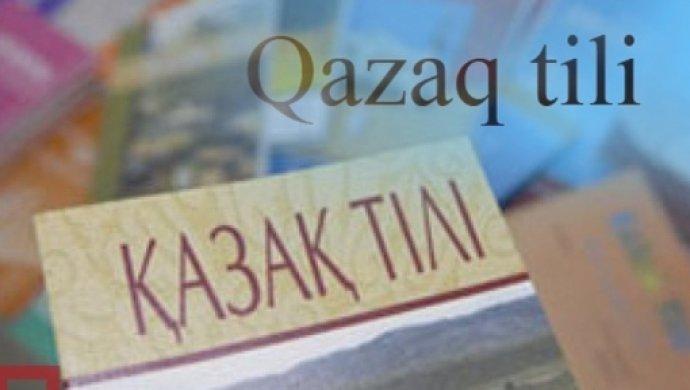 Language is one of the main communication tools and a basic human need.
Language is one of the main communication tools and a basic human need.
State language
- A Kazakh language is an official language of the Republic of Kazakhstan.
- It is used in public administration, legislation, legal proceedings and paper work.
- The state language functions in all spheres of public relations throughout the country.
Multinationality and language policy
- Kazakhstan is a multinational state inhabited by representatives of various ethnic groups.
- A language policy is aimed at preserving linguistic diversity and peaceful coexistence of all languages and their speakers.
- Every language on the territory of Kazakhstan is considered a national treasure.
Trilingualism in education
- Instruction in schools is conducted in Kazakh, Russian and English.
- This helps develop students' communication skills.
- Trilingual education helps to become familiar with culture and traditions of different peoples.
Citizens’ language rights
- Every citizen of the Republic of Kazakhstan has the right:
- to use a native language;
- to freely choose the language of communication, education, training and creativity.
- The state provides conditions for the study and development of the languages of all peoples of Kazakhstan.
- There is no discrimination based on language in the country.
Traditions
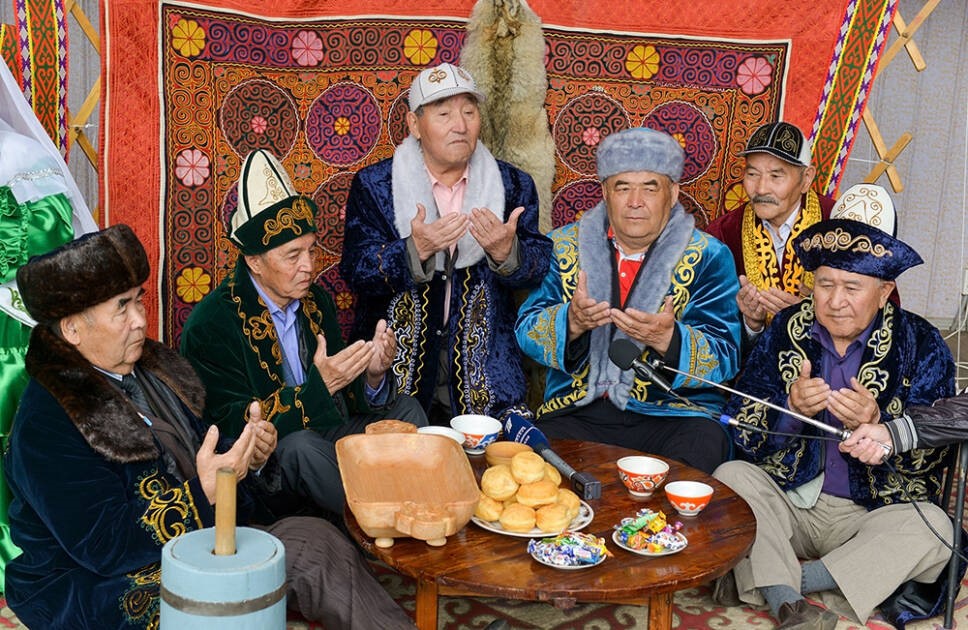 Kazakhstan is a modern state that honors respectful attitude to the traditions
Kazakhstan is a modern state that honors respectful attitude to the traditions
Modernity and Traditions
- Today the Republic of Kazakhstan is a developed and prosperous state with a modern Constitution and legal system.
- Along with the laws, the Kazakh people honor their centuries-old traditions, rooted in the customs of nomadic tribes.
Kazakh traditions of hospitality
- Hospitality is one of the most respected traditions and traits of national character.
- A guest is the most important and desired person in the house, who is received with an open heart and treated to the best dishes.
Basic customs of hospitality:
- Konakasy is a tradition of treating a guest.
- Bata beru is a blessing pronounced by elders when a guest leaves.
- Bel koterer - special treats for elderly guests, symbolizing respect.
- Konakkade is a request from the host to the guest to perform a song or play an instrument.
- Erulik is a holiday in honor of new settlers, meeting neighbors.
- Korimdik is a gift for meeting a daughter-in-law or a newborn.
- Suyinshi is a custom of giving a gift to a person who brings good news.
Shashu is the practice of showering guests with sweets and money, a symbol of good luck.
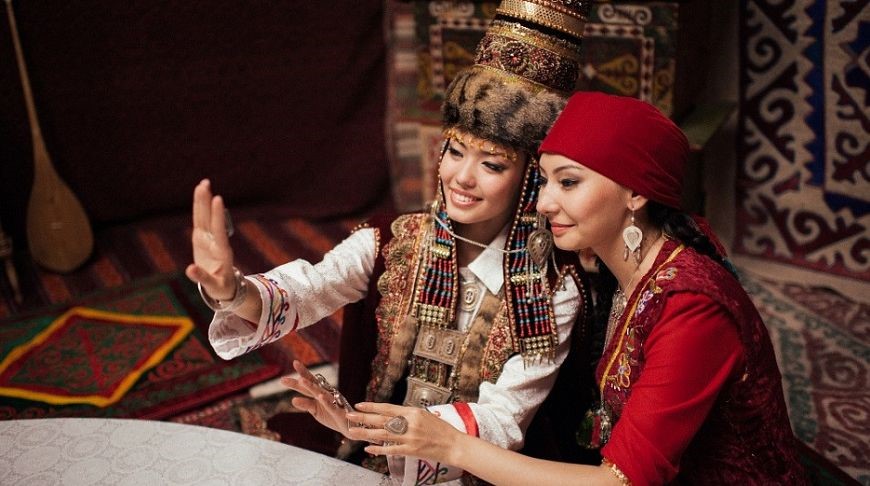 Kazakh wedding (Uylenu toy)
Kazakh wedding (Uylenu toy)
Stages and customs of a Kazakh wedding:
- Qudalyq/Quda tusu - matchmaking, official introduction of families.
- Kalyn mal - bride dowry.
- Syrga salu - putting on a bride’s earrings, a symbol of agreement.
- Kiit - gifts to the bride's relatives.
- Kyz uzatu - seeing the bride off to the groom's house.
- Kelin tusiru - a formal reception of the bride in the groom's house.
- Betashar is the unveiling of the bride's face and her presentation to the groom's relatives.
Traditionally, the bride walks on a white cloth “Ak zhol”, a symbol of a pure and bright path.
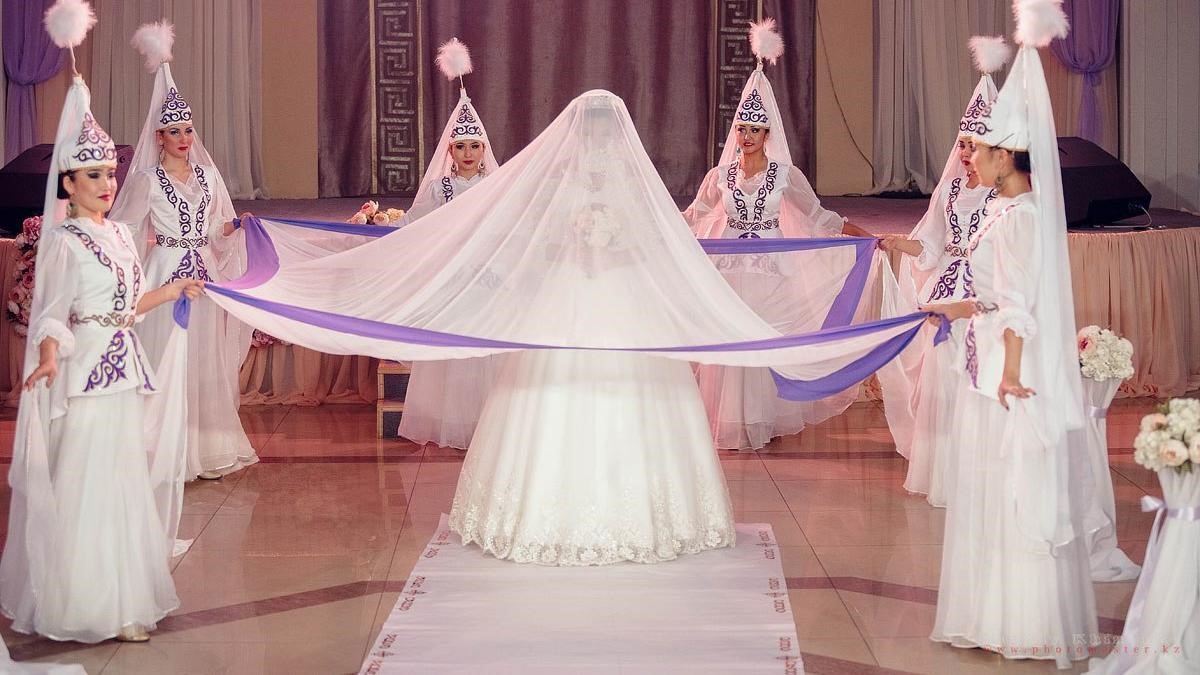 Modern wedding:
Modern wedding:
- Often lasts only 1 day.
- European elements are used: white dresses, processions, photo sessions.
- However, national traditions remain at the center of wedding ceremonies.
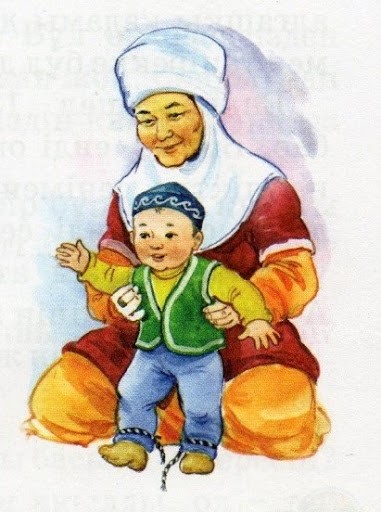 Rituals associated with the birth and upbringing of children
Rituals associated with the birth and upbringing of children
- Shildehana is a holiday in honor of the birth of a child.
- Yesim koyu/At koyu/ Azan shakyru is a naming ceremony with the blessing of a respected person.
- Kyrkynani shygaru is the fortieth day after birth:
- The child is bathed in silver water.
- They do the first hair and nail cut.
- Tusau kesu is cutting the fetters of a child when he begins to walk:
- Conducted by a respected person.
- Symbolizes an easy and prosperous life path.
Combination of tradition and modernity
- In Kazakh families, children are proficient in digital technologies and speak English, while the older generation maintains traditional clothing and lifestyle.
This creates an atmosphere of mutual understanding, respect and love between generations.
Architectural monuments and buildings
Architecture is a reflection of the history and culture of the people. In Kazakhstan, you can see unique structures, from an ancient yurt to the futuristic buildings of the modern capital.
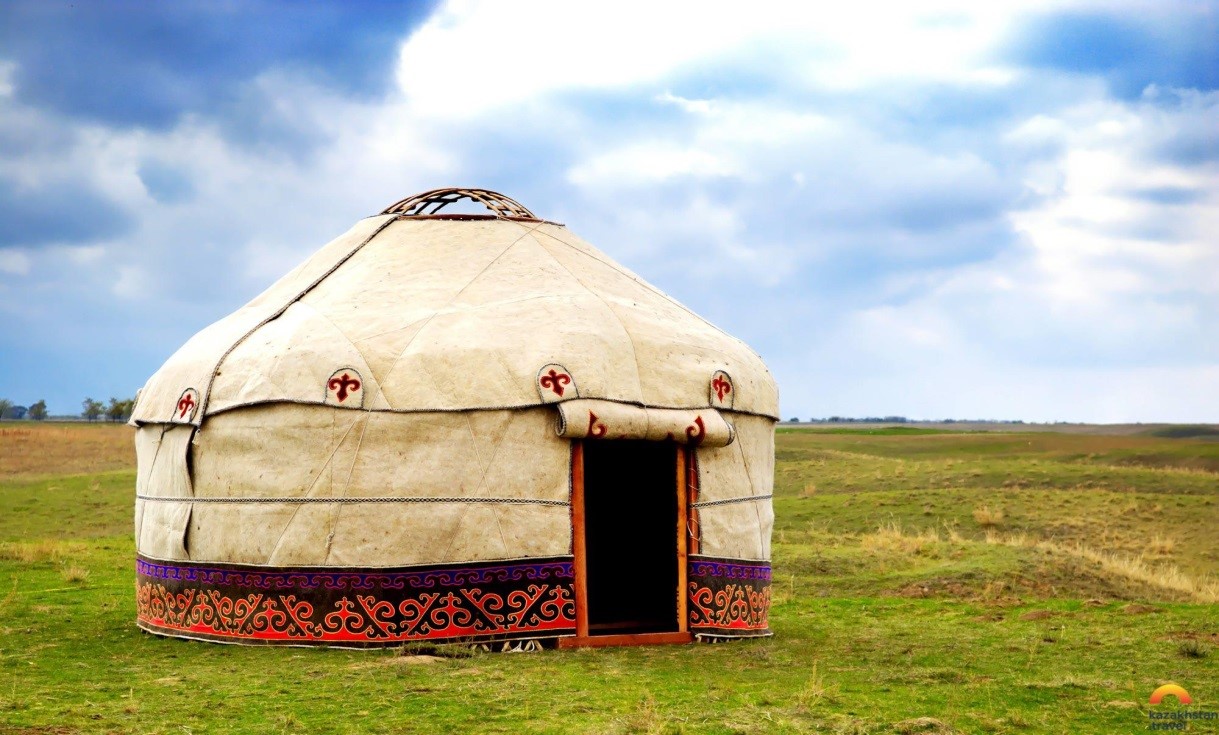 Yurt is a masterpiece of nomadic architecture
Yurt is a masterpiece of nomadic architecture
- The yurt history goes back to the 12th century BC.
- The Kazakh yurt type was finally formed in the 19th century.
- The advantages are easy to assemble, transport, weather protection.
- Today, the yurt is still used by livestock breeders in everyday life.
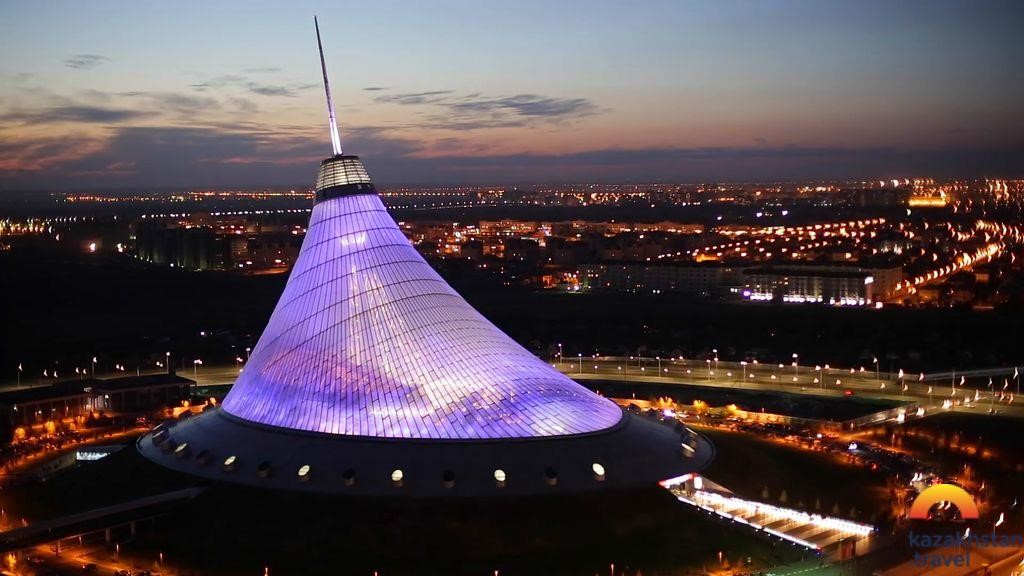 Khan Shatyr is a symbol of modern Astana
Khan Shatyr is a symbol of modern Astana
- Translation of the title: "Khan among the tents".
- The tallest tent in the world is listed in the Guinness Book of Records.
- A shopping and entertainment center, the largest in Central Asia.
- Unique microclimate inside, despite the climatic conditions.
- One of the 10 best eco-buildings in the world according to Forbes.
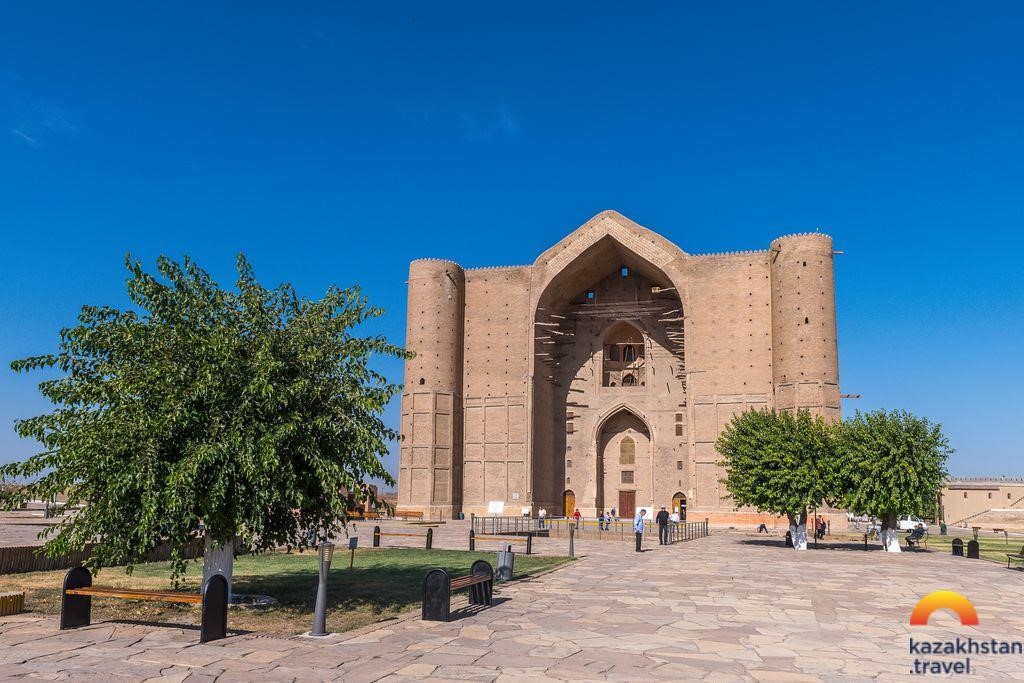 Mausoleums of Khoja Ahmed Yasawi and Arystan Baba
Mausoleums of Khoja Ahmed Yasawi and Arystan Baba
- Located in the city of Turkestan.
- Ahmed Yasawi is a saint whose teacher was Arystan Baba.
- The Yasawi Mausoleum was built by order of Tamerlane in 1405.
- It is considered a spiritual center, a second Mecca for Muslims.
- The pilgrimage often begins with a visit to the Arystan Bab mausoleum.
 Hotel "Kazakhstan" is a symbol of Almaty
Hotel "Kazakhstan" is a symbol of Almaty
- Built during the era of Soviet modernism.
- Height: 102 meters, 25 floors.
- The most earthquake-resistant building in the city.
The "golden crown" on the roof is a recognizable detail.
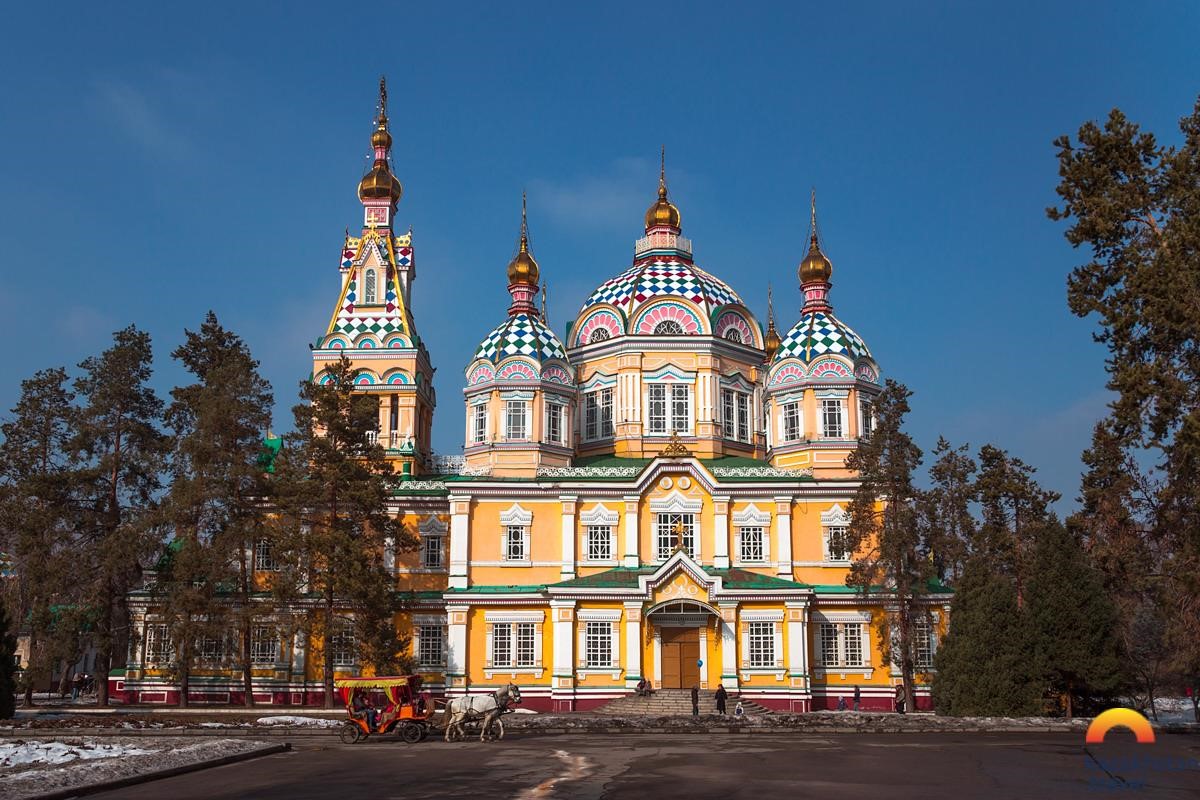 The Ascension Cathedral is a wooden miracle
The Ascension Cathedral is a wooden miracle
- Built in 1907 in Almaty from wood without nails.
- One of the tallest wooden temples in the world.
- Survived the 1910 earthquake.
- It is still used as an Orthodox church.
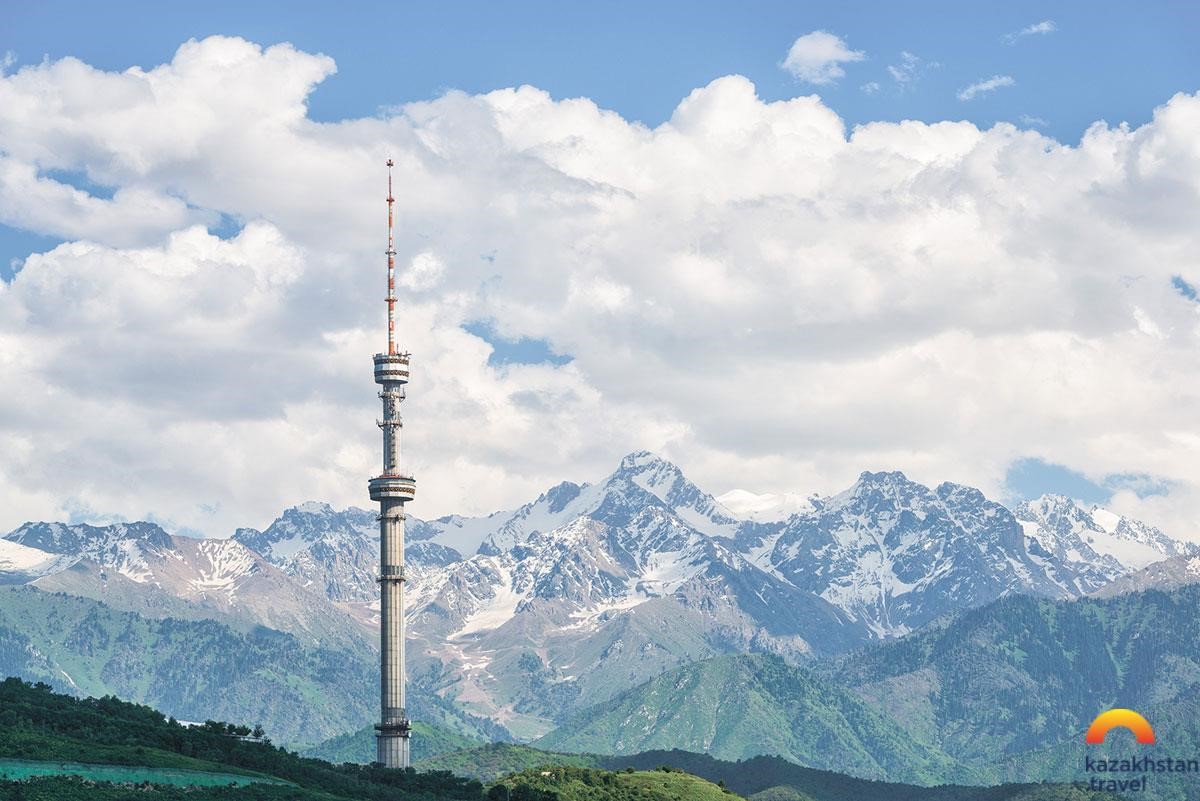 Kok-Tobe TV Tower is an engineering achievement
Kok-Tobe TV Tower is an engineering achievement
- Situated on the mountain of the same name in Almaty.
- Its height is 372 meters, its weight is 50 thousand tons.
- The foundation is 45 thousand tons of concrete.
- Withstands earthquakes up to 10 points.
- The second tallest building in Kazakhstan.
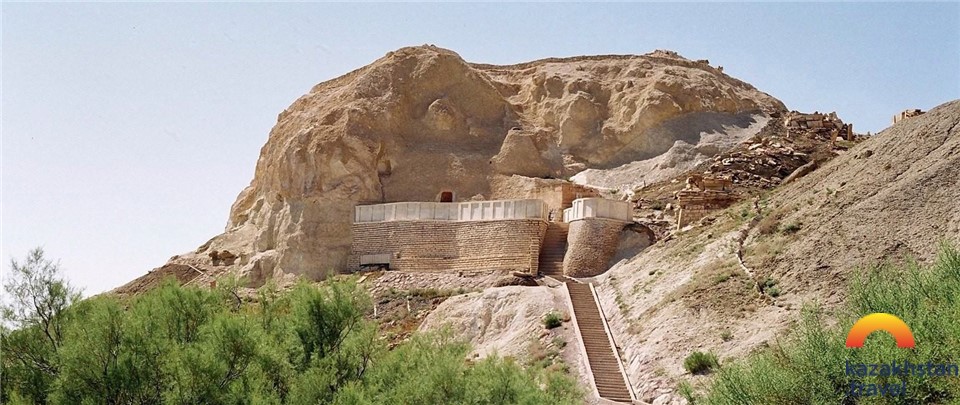 Underground mosque Beket-ata
Underground mosque Beket-ata
- It is located in Oglandy tract near Aktau.
- Carved into the rock, it includes several rooms.
- Decorated with Arabic and Persian inscriptions.
- Built by Saint Beket-ata, the place is considered as sacred.
- Thousands of believers make pilgrimages there every year.
Kitchen
Kazakh cuisine is not just food, but a part of the culture, reflecting the nomadic way of life and rich history of the people. It is valued not only in the country itself, but also beyond its borders.
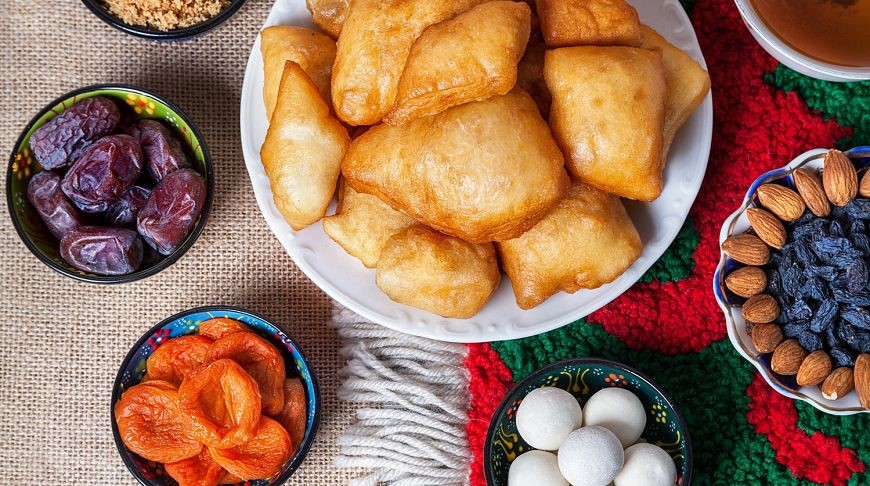 Main features of Kazakh cuisine:
Main features of Kazakh cuisine:
- The basis of the dishes has been formed over centuries, passed down from generation to generation.
- There is an abundance of meat: beef, horse meat, lamb.
- Fermented milk products: kumiss, shubat, ayran.
- Flour products: bauyrsaki, flatbreads, lagman.
The most famous dishes:
- Beshbarmak is the main national dish made from meat and noodles.
- Kazy is a traditional horse meat prepared in a special way.
- Kuyrdak is a roast meat dish with onions and potatoes.
- Bauyrsaki is fried dough, served with meat or tea.
- Irimshik is a sweetish dairy product.
Popularity abroad:
- Kazakh cuisine can be found in many cafes and restaurants both in Kazakhstan and abroad.
- Its taste, richness and originality are highly valued by foreigners.
Cuisine as a part of culture:
- Serving food is a ritual that involves respect for guests and traditions.
- Gastronomic traditions are closely linked to the way of life of the nomads of the Great Steppe.
- The cuisine of Kazakhstan combines the tastes of more than 130 nationalities living in the country.
Gastronomic tourism:
- The diversity of dishes associated with different regions has become the basis for the development of gastronomic tourism.
- Many tourists come not only for nature, but also to taste unique dishes and experience the culture and way of life of the Kazakhs.
National sports
National sports are an important part of Kazakhstan's cultural heritage and the country's brand. Since ancient times, the Kazakh people have held competitions at festivals, demonstrating strength, agility and competitive spirit. Today, they are experiencing a revival and are becoming increasingly popular, especially among young people.
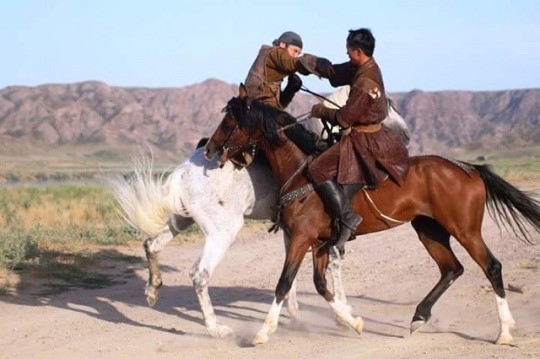 Audaryspak: This is a horse fight between the best riders. It requires exceptional endurance, strength, agility and the ability to stay in the saddle. The essence of the competition is that two riders compete to see who can pull the other off the horse.
Audaryspak: This is a horse fight between the best riders. It requires exceptional endurance, strength, agility and the ability to stay in the saddle. The essence of the competition is that two riders compete to see who can pull the other off the horse.
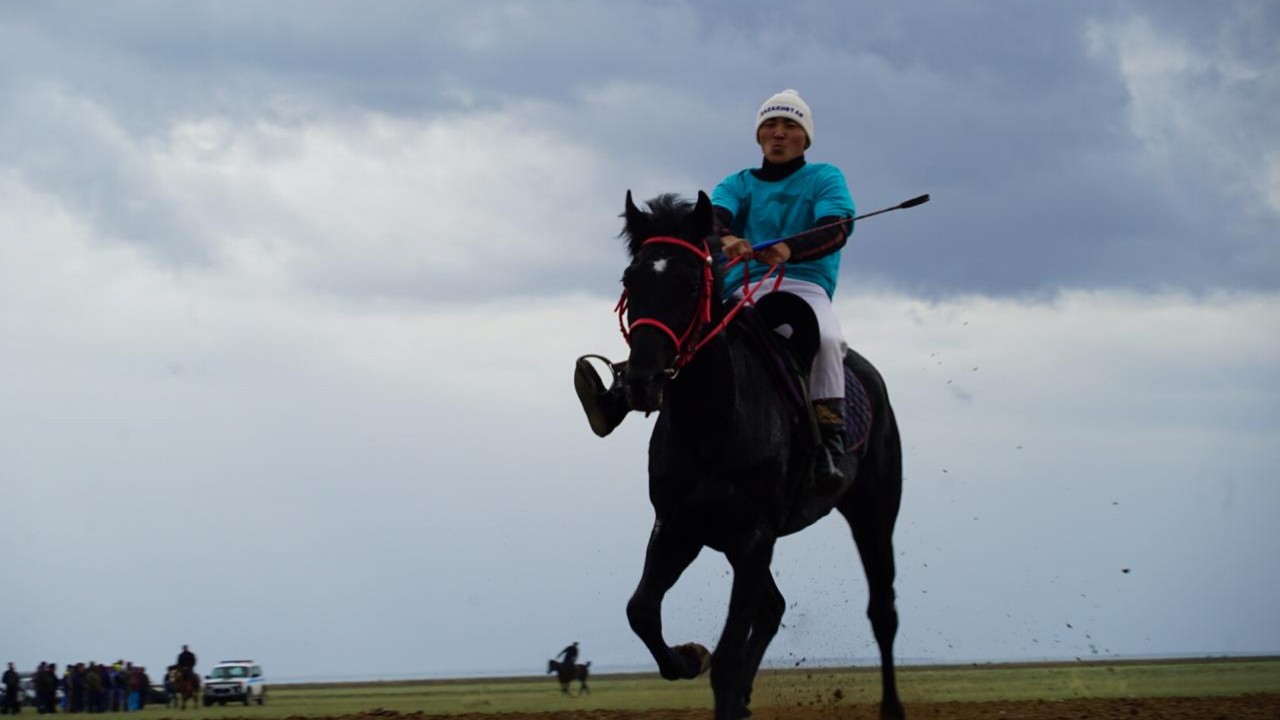 Baighe: The oldest and most popular form of equestrian sport, which takes place not only on flat terrain, but also in hilly areas. Here, competent preparation of the player, the ability to assess the situation and correctly use the horse's strength are important. This sport develops endurance, resourcefulness and courage.
Baighe: The oldest and most popular form of equestrian sport, which takes place not only on flat terrain, but also in hilly areas. Here, competent preparation of the player, the ability to assess the situation and correctly use the horse's strength are important. This sport develops endurance, resourcefulness and courage.
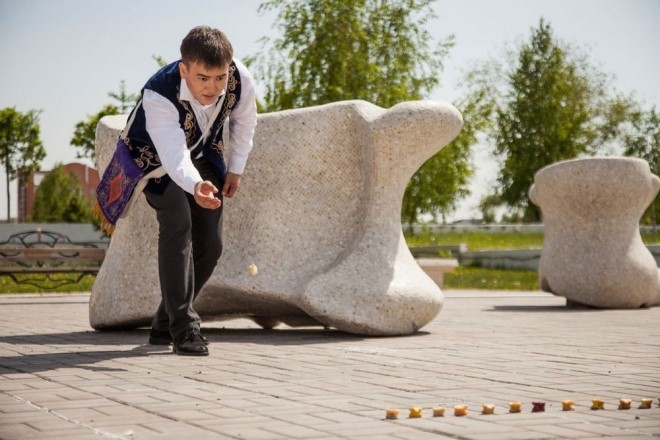 Asyk atu: An ancient game of asyks (sheep bones) associated with the nomadic lifestyle of the Kazakhs and cattle breeding. This game helps strengthen the nervous system of children and develops precision, calculation ability and endurance.
Asyk atu: An ancient game of asyks (sheep bones) associated with the nomadic lifestyle of the Kazakhs and cattle breeding. This game helps strengthen the nervous system of children and develops precision, calculation ability and endurance.
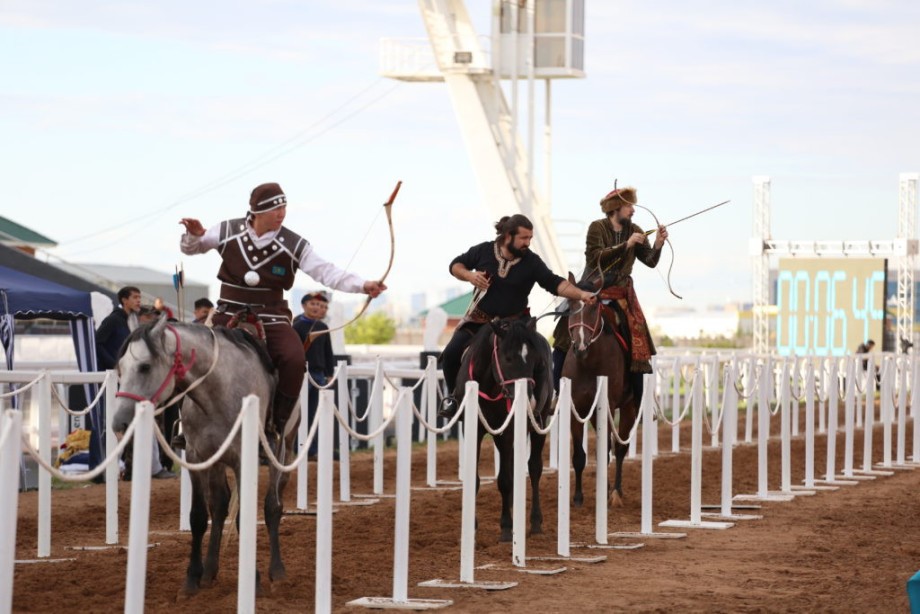 Zhamby atu: An ancient game that tests agility and marksmanship. The essence of the competition is archery at a target (“zhamby”) mounted on a pole. Shooting takes place on horseback, and a point is awarded for hitting the target.
Zhamby atu: An ancient game that tests agility and marksmanship. The essence of the competition is archery at a target (“zhamby”) mounted on a pole. Shooting takes place on horseback, and a point is awarded for hitting the target.
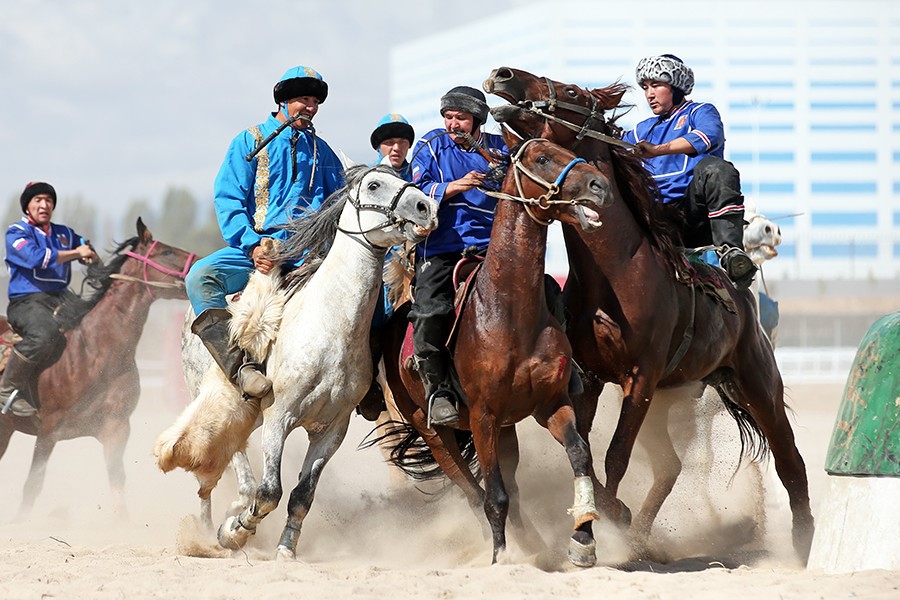 Kokpar: A sport that has its roots in traditional wolf hunting. Two teams try to take possession of a goat carcass and throw it into the opponent's cauldron. Kokpar combines elements of wrestling, rugby and horse riding. It is an extreme sport in which modern equipment protects the health of the participants.
Kokpar: A sport that has its roots in traditional wolf hunting. Two teams try to take possession of a goat carcass and throw it into the opponent's cauldron. Kokpar combines elements of wrestling, rugby and horse riding. It is an extreme sport in which modern equipment protects the health of the participants.
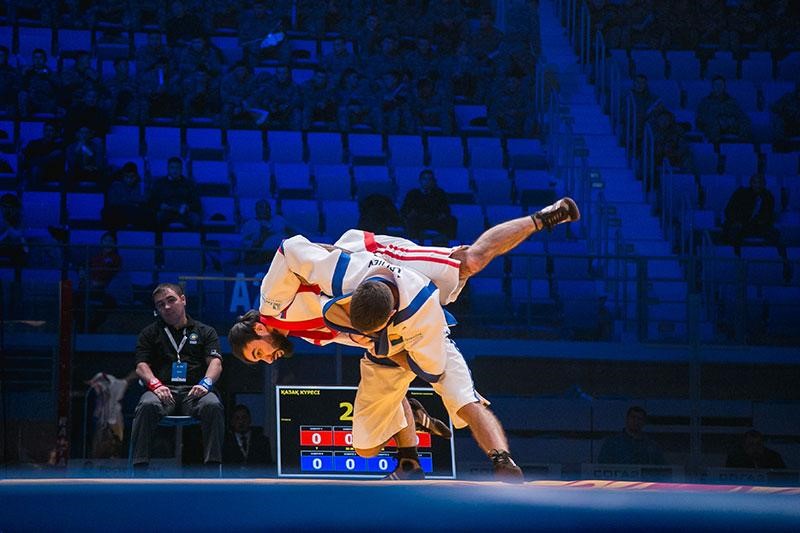 Kazakh kures: Kazakh wrestling, which has existed since ancient times. Athletes can use various techniques to knock down an opponent. Kazakh wrestling competitions are held at the national and international levels, which helps popularize this sport among young people.
Kazakh kures: Kazakh wrestling, which has existed since ancient times. Athletes can use various techniques to knock down an opponent. Kazakh wrestling competitions are held at the national and international levels, which helps popularize this sport among young people.
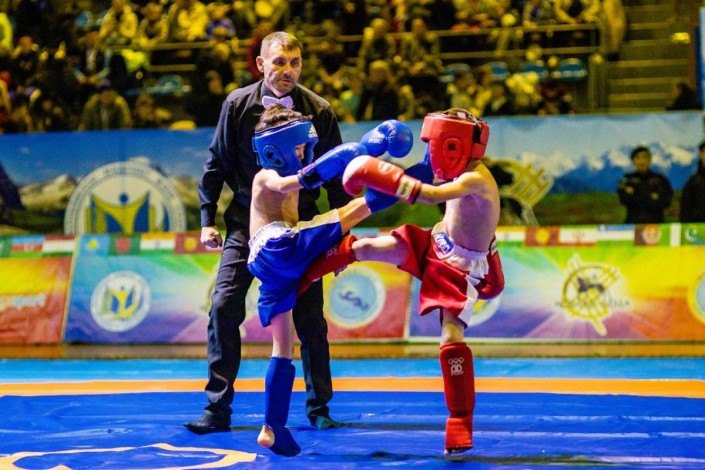 Martial arts: One-on-one combat sports in which the winner is determined by points or physical superiority. Includes such sports as karate, judo, boxing, and mixed martial arts.
Martial arts: One-on-one combat sports in which the winner is determined by points or physical superiority. Includes such sports as karate, judo, boxing, and mixed martial arts.
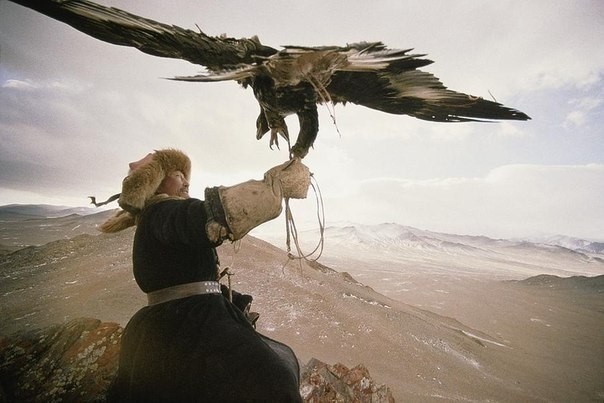 Hunting with birds of prey: The golden eagle is a sacred bird for the Kazakh people. It is used to hunt wild animals such as saiga, fox and roe deer. Golden eagle hunting is held in an open area where the birds must catch wild animals, and the winner is the one whose bird catches the first prey.
Hunting with birds of prey: The golden eagle is a sacred bird for the Kazakh people. It is used to hunt wild animals such as saiga, fox and roe deer. Golden eagle hunting is held in an open area where the birds must catch wild animals, and the winner is the one whose bird catches the first prey.
 Togyzkumalak: A Kazakh folk board logic game played on a board with 18 playing and 2 accumulating holes. The game develops mathematical thinking and fosters endurance, as it requires the use of all four basic mathematical operations and a tactical approach. Opponents can play for several hours.
Togyzkumalak: A Kazakh folk board logic game played on a board with 18 playing and 2 accumulating holes. The game develops mathematical thinking and fosters endurance, as it requires the use of all four basic mathematical operations and a tactical approach. Opponents can play for several hours.
World Nomad Games
The World Nomad Games are international sports competitions dedicated to ethnic sports. These competitions are based on traditional games of nomadic peoples, which are part of the cultural heritage of humanity. The objective of the Games is to develop ethnosports and ethnoculture.
September 8 -13, 2024 Astana hosted the 5th World Nomad Games. Over the course of the week, there were competitions in 21 sports, a rich cultural program in the Ethnoaul "Universe of Nomads" , as well as a scientific and practical conference called "Nomads: History, Knowledge, Lessons".
About 2,500 athletes from 89 countries took part in the Games. According to preliminary data, hundreds of thousands of spectators attended the event - both residents of capital city and tourists from other regions and countries.
On the territory of Ethnoaul near the hippodrome "Kazanat" more than 100 cultural events were held: concerts from the regions, craft fairs, exhibitions, aitys, as well as a photo studio from the famous photographer Jimmy Nelson in a Kazakh yurt. Yurts of international organizations UNESCO, UNICEF, Alageum were installed.
There were 1200 people attended the scientific conference over 3 days.
The sports program lasted 6 days and took place at six venues:
- hippodrome "Kazanat"
- bowdrome "Argymak"
- Ethnoaul
- Palace of Martial Arts named after J. Ushkempirov
- Ice Palace "Alau"
- other objects.
There were 100 sets of medals awarded (initially 97, but at the request of the foreign teams, the women's disciplines in traditional archery were added: put, kalkan, zhamby).
The largest number of participants was in the Kazakh competition “kuresi” - 266 athletes.
The following people were involved in the organization:
- more than 100 units of transport
- 1600 volunteers
- about 1500 media representatives
Literature
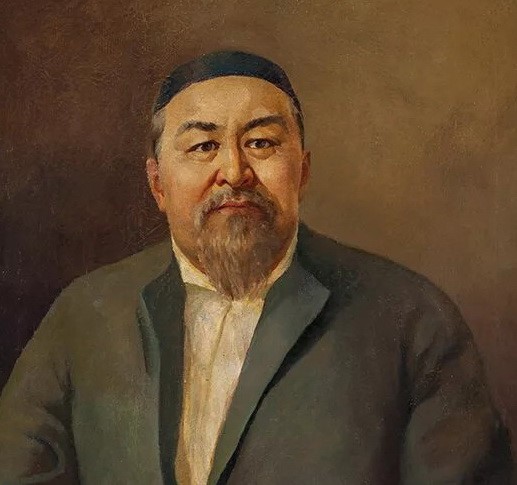 Kazakh literature has a long history, which spans several millennia. The primary sources of Kazakh literature are dastans such as " Alyp Er Tonga" and "Shu Batyr", created in the 11th-3rd centuries BC. These works are closely connected with the ancient history of the Kazakh people. Among the sources of ancient Turkic literature are also known the Orkhon -Yenisei inscriptions, the works of Yusuf Balasaguni and Mahmud Kashgari, as well as the treatise "Codex Kumanikus".
Kazakh literature has a long history, which spans several millennia. The primary sources of Kazakh literature are dastans such as " Alyp Er Tonga" and "Shu Batyr", created in the 11th-3rd centuries BC. These works are closely connected with the ancient history of the Kazakh people. Among the sources of ancient Turkic literature are also known the Orkhon -Yenisei inscriptions, the works of Yusuf Balasaguni and Mahmud Kashgari, as well as the treatise "Codex Kumanikus".
In ancient times, the nomads of Kazakhstan told mythical stories about heroes, gods and monsters, which later became the basis for epics such as " Korkyt-ata " and "Oguz- name".
In the 15th century, a new genre appeared in Kazakh literature “tolgau”. These are poetic reflections with wisdom or edification performed by an author and singer and are called "zhyrau". The “zhyrau” had a great influence on the social and political life of the country, often playing the role of educators. Later, the tradition of "aitys" had developed which are the song and poetry duels between the singers “akyns”, touching on important topics of society, religion and politics.
The 19th century started the development of written literature, influenced by Russian and European writers. At the end of the 19th century, such authors as Ibray Altynsarin, Shokan Valikhanov and Abai Kunanbayev the last is considered a classic of Kazakh literature. Abai's work opens a new stage in Kazakh realistic literature. His poems, in particular "Eight-Line Poems", express a call for goodness, knowledge, culture, justice and love for the native land. Abai translated about 50 works by Pushkin, Lermontov and Krylov. In 2020, Kazakhstan celebrated the 175th anniversary of Abai's birth.
With the development of Kazakh literature, it begins to be enriched with translations of world works, Kazakh writers master new genres, and the recording and collection of Kazakh folklore begins.
In the 20th century, Kazakh literature embraced traditional socialist themes, poets wrote patriotic works dedicated to the Great Patriotic War. In the second half of the 20th century, writers created major novels, developed dramaturgy and mastered the genre of science fiction. Thus, Kazakh literature of the 20th century merged with world trends and continues to follow this course today.
Music
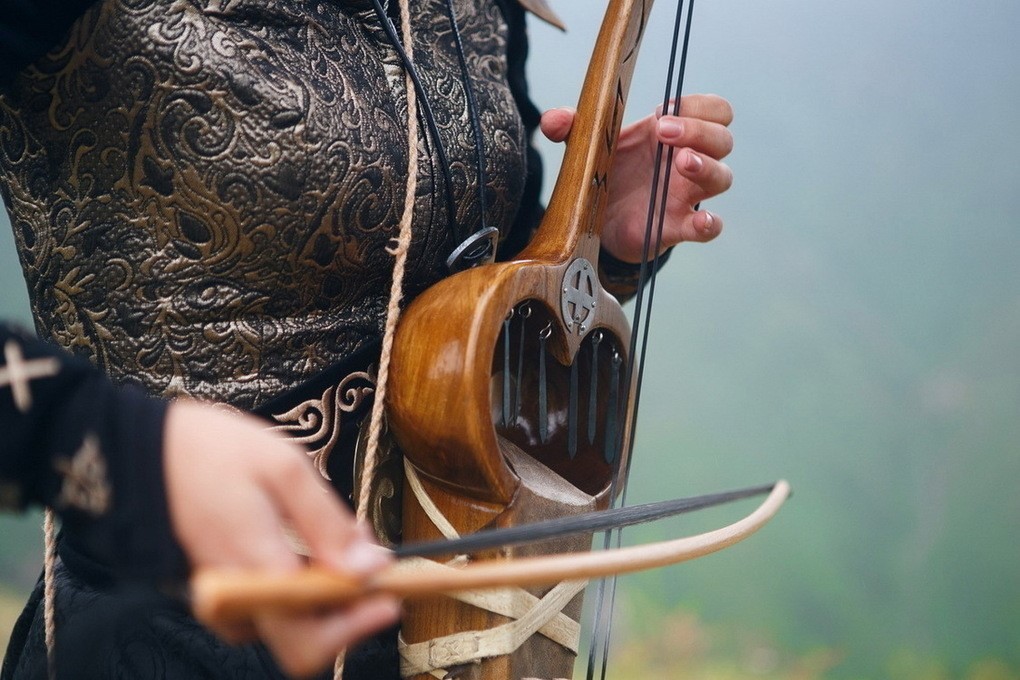 Traditional Kazakh music has deep roots in the culture of the people, and folk musical instruments such as kobyz, dombyra, sybyzgy, dauylpaz, kossyrnai, sherter, zhetygen, kerei, asatayak, konyrau and others take significant place in it.
Traditional Kazakh music has deep roots in the culture of the people, and folk musical instruments such as kobyz, dombyra, sybyzgy, dauylpaz, kossyrnai, sherter, zhetygen, kerei, asatayak, konyrau and others take significant place in it.
- “Kobyz” is a bowed string instrument made from solid wood. It has a unique shape and produces amazing sounds, imitating the sounds of nature, such as the howling of wolves or the running of horses.
- “Dombyra” is the most common and favorite instrument of the Kazakhs. The simplicity of its production in the conditions of nomadic life made it popular and accessible. Dombyra continues to be an integral part of the Kazakh culture.
- “Sybyzgy” is a wind instrument made from the stem of the kurai plant. It produces high, fluttering sounds reminiscent of a flute.
- Asatayak is an ancient percussion instrument resembling a staff or cane. Its sounds are amplified by bells (konyrau) attached to the head of the instrument.
- Sazsyrnai is a clay wind instrument with a clear and bright timbre. It was popular among children in ancient times.
- Zhetygen is a plucked string instrument similar to a gusli or harp, having seven strings in the classic version. Modern versions may have more strings.
- Shankobyz is a self-sounding reed instrument, played using the mouth cavity as a resonator. This instrument is made of metal or wood.
- Dabyl (Daulpaz) is a percussion instrument that resembles a frying pan with a handle. It is used to give military signals, such as an attack signal.
Folk songs and singers-storytellers “akyns” occupy an important place in the musical culture of the Kazakhs. The “akyns” performed with dombra, competed in song and poetry duels called “aitys”, where they discussed important topics.
In the 19th century, Kazakh music began to integrate into world culture. The Kazakh musical traditions began to be studied by Russian and European musicologists, and the Kazakh musicians became familiar with world music. This mutual enrichment of cultures led to the emergence of new names, such as Abai Kunanbayev, Kurmangazy Sagyrbayuly, Ykylas Dukenov and others.
Today, Kazakh folk music is considered an important element of Kazakhstan's cultural heritage. Composers and musicians create new works, preserving folk motifs, and also continue to develop and preserve the history of musical creativity. A great way to get to know the history of Kazakh music better is to visit the Museum of Musical Instruments in Almaty.Holidays
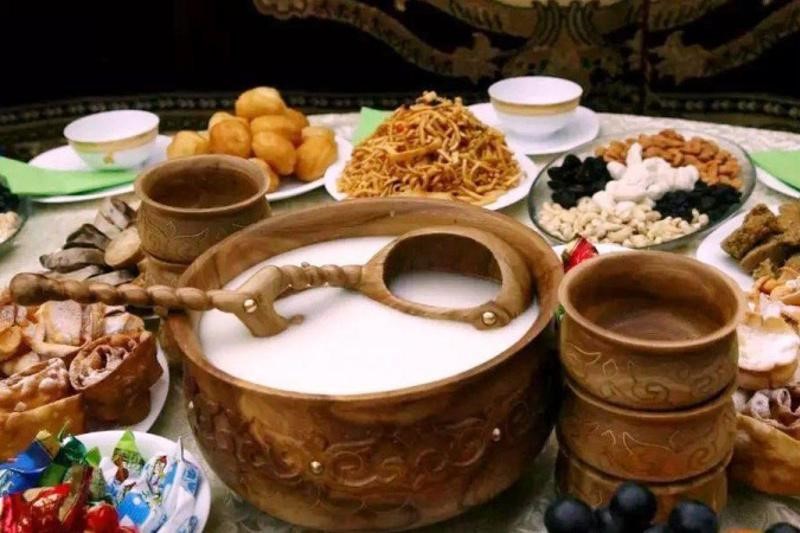 State and national holidays of the Republic of Kazakhstan:
State and national holidays of the Republic of Kazakhstan:
- January 1, 2 – New Year
- March 8 – International Women's Day
- March 21, 22, 23 – Nauryz Meiramy (festival of spring and renewal)
- May 1 – Day of Unity of the People of Kazakhstan
- May 7 – Defender of the Fatherland Day
- May 9 – Victory Day
- July 6 – Capital Day
- August 30 – Constitution Day
- October 25 – Republic Day
- December 16 – Independence Day
Nauryz Meiramy is one of the main traditional holidays of the Kazakh people. It is officially celebrated in Kazakhstan for three days in a row - March 21, 22 and 23. The holiday symbolizes the New Year according to the ancient Eastern calendar. On these days, decorated yurts are set up in cities and villages, where everyone can try a festive treat. Mass games and events are held.
Modern Nauryz has retained its connection with ancient traditions. In the context of the revival of national culture, it is an important element of the “connection of times” and a symbol of the harmony of the history and modernity of Kazakhstan.
The main ritual dish of the holiday is nauryz -kozhe, which must consist of seven ingredients: water, meat, salt, fat, flour, grains (rice, corn or wheat) and milk.
On September 30, 2009, the Nauryz was included in the UNESCO Representative List of the Intangible Cultural Heritage of Humanity, and since then, the day of March 21 had been declared International Nauryz Day.
National clothes
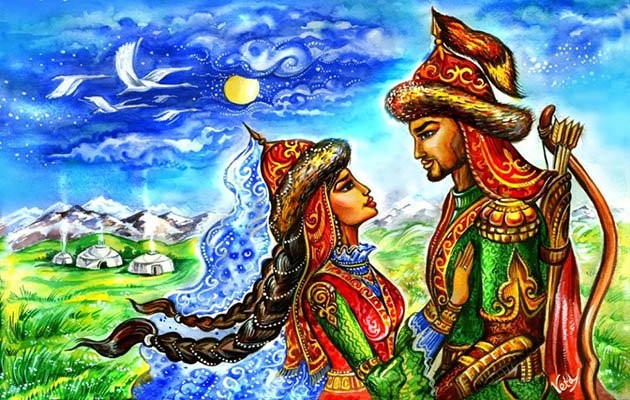 Kazakh national clothing is an important part of Kazakh culture. It reflects the traditions and lifestyle of the Kazakhs, including the use of materials that were available in the steppe conditions. The main materials for clothing are cotton, wool, felt, as well as leather and fur, which the Kazakhs used as protective materials from the cold.
Kazakh national clothing is an important part of Kazakh culture. It reflects the traditions and lifestyle of the Kazakhs, including the use of materials that were available in the steppe conditions. The main materials for clothing are cotton, wool, felt, as well as leather and fur, which the Kazakhs used as protective materials from the cold.
Footwear:
Summer boots were made of thin leather, and in winter, they wore high boots made of rougher leather, which protected from the cold. Women's shoes were often green or red, decorated with silk patterns and plaques.
Men's clothing:
The male costume included a shirt, trousers and a robe (“shapan”), as well as a headdress. In winter they wore a tymak, in summer - a kalpak. The shapan was an important element demonstrating the status of a man and varied in thickness and color.
Women's clothing:
Women's clothing included a loose dress, a camisole or a robe “shapan”. Materials such as chintz, silk, velvet and felt were used for production. In cold weather, women wore coats made of fox or lamb fur. Embroidery, beads, felt, silver plaques and various stripes were actively used in clothing decoration.
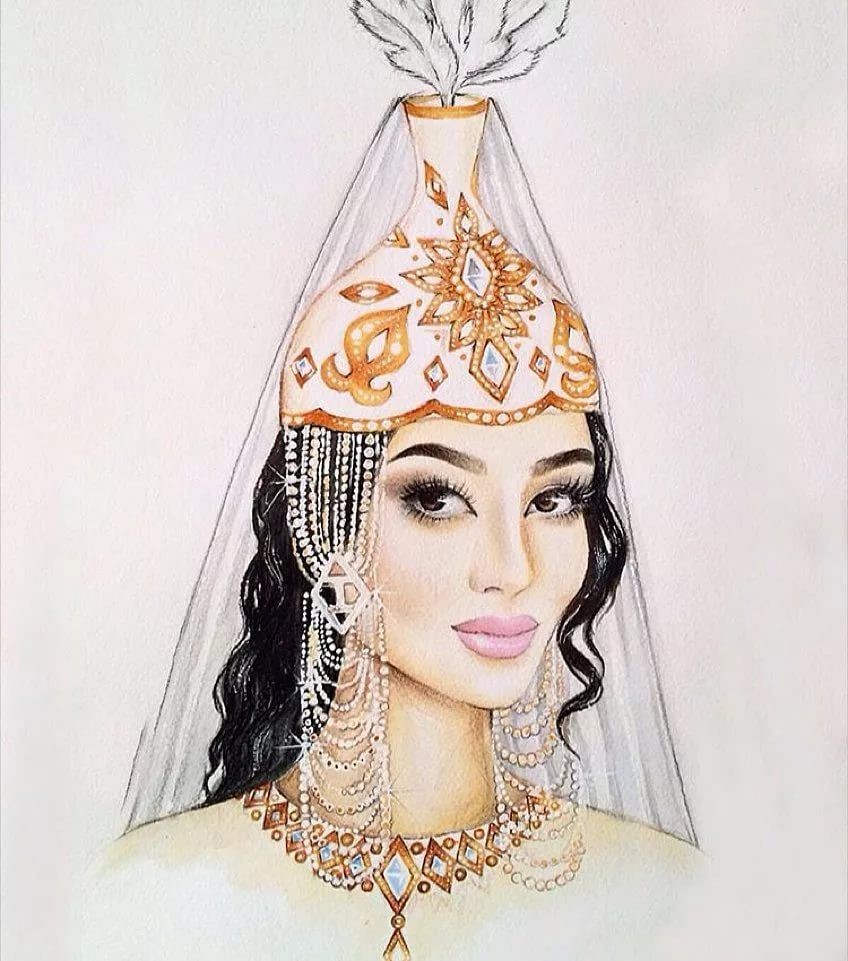 Headwear:
Headwear:
Saukele is a unique headdress worn by Kazakh brides as an important part of their wedding attire. It was cone-shaped and decorated with pearls, corals, turquoise and other precious stones. On top of the saukele was a tuft of owl feathers, and the side pendants "zhaktau" could reach the waist. Saukele was considered an expensive and beautiful decoration.
After the wedding, a married woman wore a "kasaba" hat decorated with gold patterns. When a woman gave birth to her first child, she began to wear a “kimeshek” a white turban.
Popular headdresses for men were kalpak (felt hat) and takiya (skullcap). In cold weather, men and women wore a borik (fur hat) or tymak (sheepskin headdress).